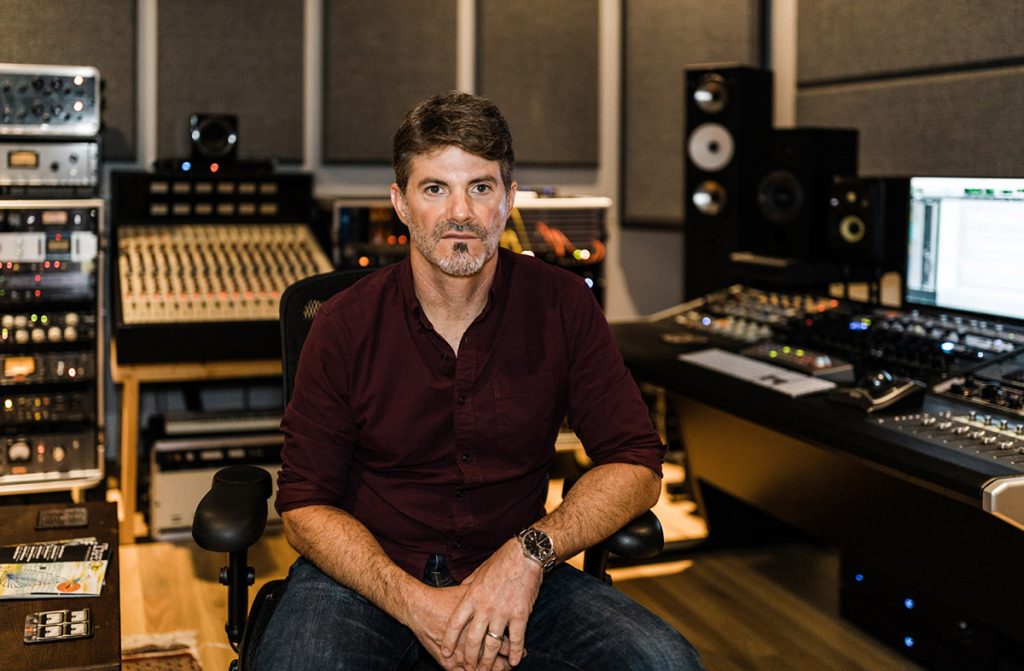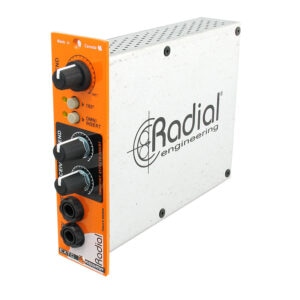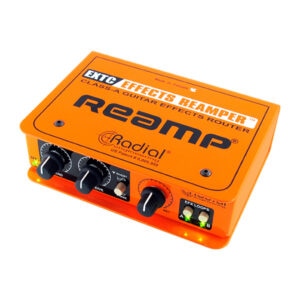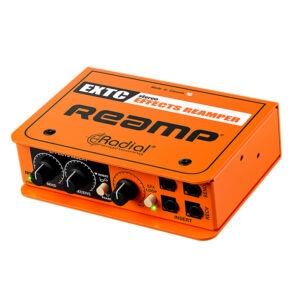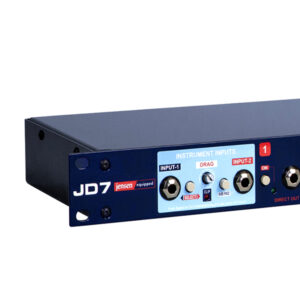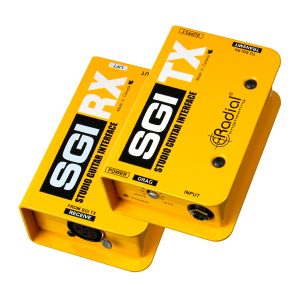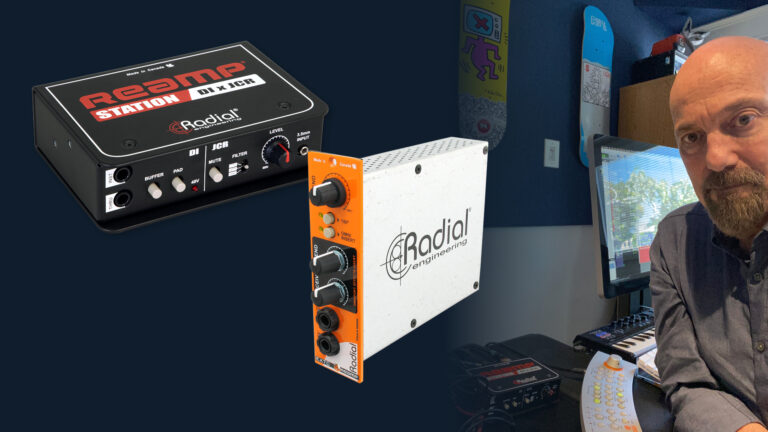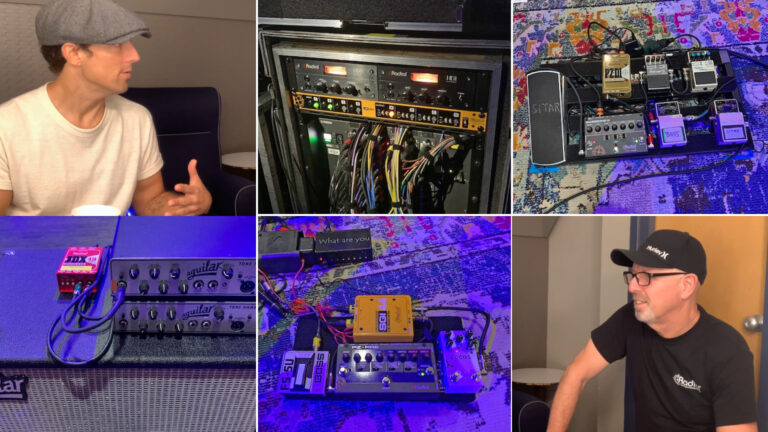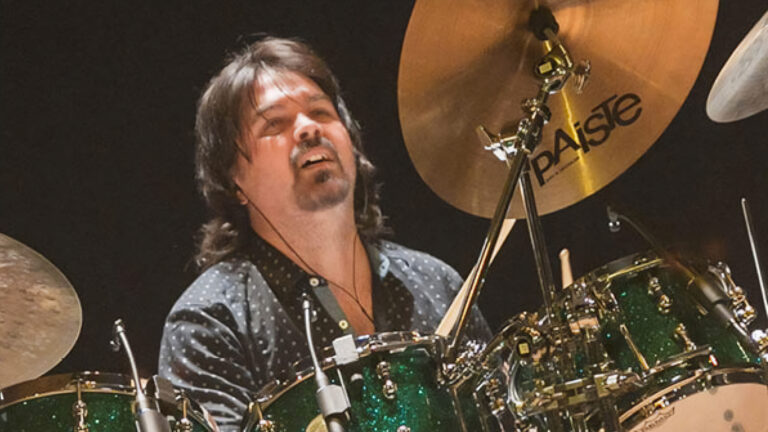In this series, we talk to top names in the world of production to find out how they use Reamping as part of their everyday process in the studio. Our interviewees share their insights into some of the original and creative ways they Reamp® that may not have occurred to you before…
First up is superstar producer Jacquire King.
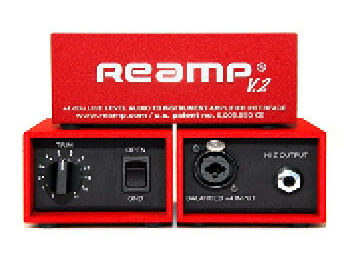
Radial: Talk about your approach to reamping.
Jacquire: I’ve been reamping for a very long time. Years ago, I worked at a studio in San Francisco where John Cuniberti was an engineer. John was a reamping pioneer and developed some of the early reamping devices that kind of led to what we all now normally use. There were a couple of John’s prototype boxes at the studio.
As I mentioned, I’ve been reamping a long time. So it’s not a new idea because people like John had done it before. It’s just now we have tools, such as those made by Radial, that are specifically designed for reamping instead of having to sort of piece things together.
But originally reamping was just the ability to kind of reshape a sound or record more conveniently in the control room. And then you have the ability once you had things put together to, instead of wearing a musician out getting a sound and deteriorating their performance energy to get that sound, you capture the performance energy, and then you can worry about finalizing the sound later.
I’ve taken that thought process, adopting it very early on, to now utilize it with non-guitar instruments or non-bass instruments — other instruments that you’ve put on tape, and want to run through amps. For example, if I’m doing some programming and drum samples, I’ll kind of give them some acoustic dimension by running those through guitar amps, and then mic the space. I’ve done stuff like that with Tom Waits many different times.
I really view reamping as this incredible creative tool that you can use in so many different ways to give dimension to sounds in a post-recording environment or treat samples through amps or just kind of pipe them into an acoustic space in the way that you would use a chamber in a traditional way. A Reamp® device gives you the ability to put absolutely anything into that type of environment.
Basically what I’m talking about is using a Reamp® box as a way to take prerecorded material and then play it back and then re-mic it. I do that with Tom Waits’ vocals.
FIGURE 1
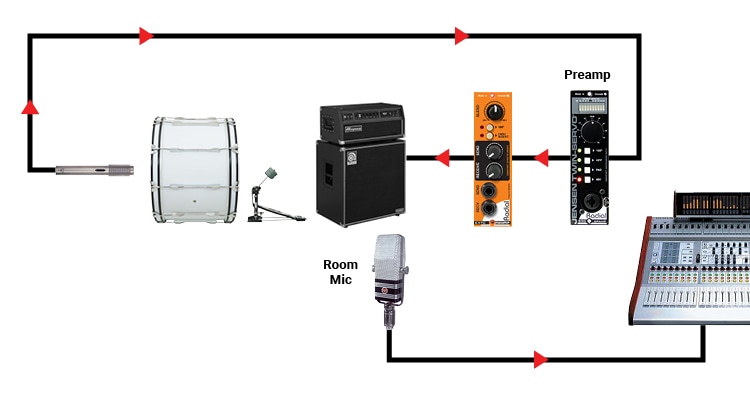
But then maybe in the last 10 years, it occurred to me to try it with drums. In certain spaces with a drum kit, although I was getting a good drum kit sound with close mics, the room itself wasn’t necessarily reacting with as much low-frequency build-up as I might like it to for certain sounds. I might be trying to get some more distant ambient micing, for example, in order to have a richer, more impactful sound.
Now I will take a microphone and I’ll put it in front of the kick drum or find a spot around the drums that is close that really accentuates the low end. You’ve got a microphone going into a mic pre. That’s a line-level signal. My desire in this case is to get that sound that I’m capturing with that mic placement and have it be reinforced in the room. Then, I’ll take the output of the mic pre that’s giving the signal for the microphone and put a Reamp® device there so then I can take it and plug it into an amp.
Sometimes, even before going to the amp, in between the Reamp® device and the amplifier, I’ll put in some pedals to do some tone-shaping or add an effect. If I want to reinforce a kick drum or the low frequencies of a drum kit in a room, I’ll take that set up and I’ll use a bass amp. I’ll use an SVT or similar amp and face it out away from the drums, put it in front of the drum kit, but facing away from the drums in the way that you would imagine the kick drum is projecting sound into the room. Then, focus it on the low end (see fig. 1).
Now, you have to be careful, obviously in a situation like that, to not create a feedback loop, but if you use gain structure properly and the amp is not too loud and the microphone and the amp are facing opposite directions as well, you can kind of get into reinforcing a space.
FIGURE 2
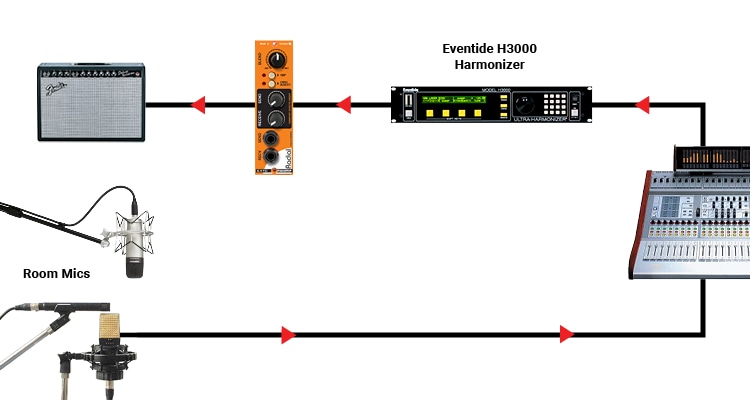
And I’ve taken that even a step further. For example, for a song I did with the Punch Brothers, an all-acoustic sort of five-piece bluegrass configuration. In order to create a sound in the room, I’ll take a blend of the live microphones that I’m recording, send them from the desk back out into the room off an aux send. In this case, we’re sending a line-level signal from the desk back out to the room. I’m taking the signal off the aux send from the desk, blending certain microphones, and then running it through an H3000 and generating a chorus or pitched sounding effect. And then with amplification out in the room, adding that affected sound into the space — all happening live (see fig. 2).
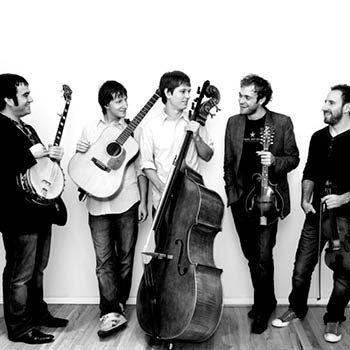
The acoustic space now has this affected, treated version of the instrument blend is. It’s then bleeding back into the microphones and coloring the space. It kind of gives a really unique dimension to the sound. I’ve made some recordings that I thought were pretty good at the time, but in hindsight, it’s like, “Well, I could’ve done that better, or I there’s a part of the spectrum or the feel that I’m missing, so, hey, let’s Reamp® the sound and kind of get that additive texture that I need.”
Honestly, the thought process and the ability to Reamp® things has kind of given me a thought process that you can apply across many kinds of production ideas and executions
FIGURE 3
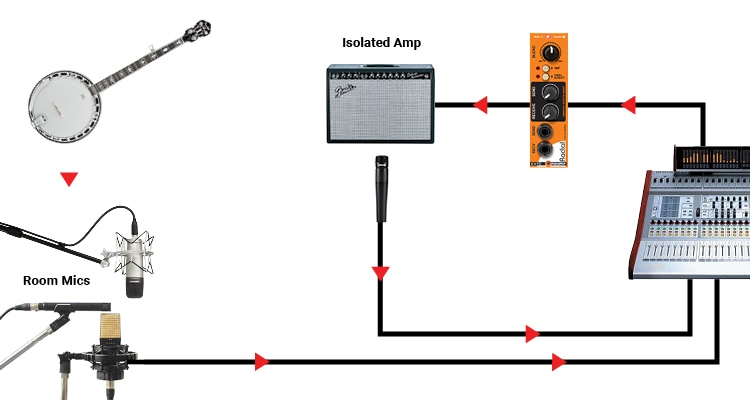
Radial: It’s kind of like you’re experimenting with this environment, as in a laboratory.
Jacquire: Absolutely. For me, reamping has created production techniques and sound stage options. I go back to the Punch Brothers example. I was taking the live mics and choosing one of them for reamping because I had the instruments multi-mic’d.
In that case, I’d choose a microphone, typically kind of a mid-range one, because that’s typically a friendlier sort of sonic signature to put into a guitar amp, if you will. I’ll pick a mid-rangey sounding mic or the one that sort of fits that color the best. Then I’ll use a Reamp® box to take that live mic and send it to an amp in isolation where I could put in a very affected sound of the instrument. For the Punch Brothers project, we’re talking about a very acoustic traditional-sounding instrument, like a banjo (see fig. 3).
FIGURE 4
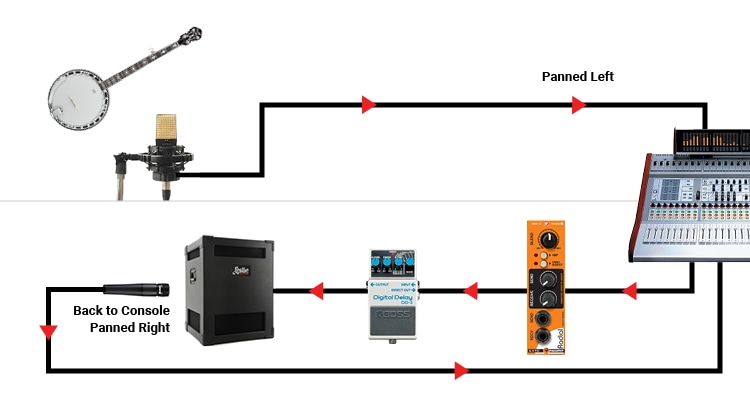
I’d take the live mic off the banjo and I’d put it through a Leslie cabinet with a delay in between the Reamp® box and the input to the Leslie. That creates unique textures, so maybe in the mixed presentation or the sonic presentation of the band, I’ve kind of got the banjo off to the left a bit.
I would use the affected amped interesting textural sounds and I’d pan whatever sound I was creating for the banjo to the other side. That gave it this depth and texture. So the banjo still sounds like a banjo in its spot in the frequency spectrum and in the sound stage, but then there’s this texture and depth to it that you’re kind of able to create with a Reamp® box (see fig. 4).
That leads to having the Radial EXTCs, where we are kind of taking that idea further and using things like guitar pedals which can be very unique sounding. Guitar pedals are very tactile. With the EXTCs you can use the pedals as if they were plugins or just as part of the signal path, like a balanced line-level signal path.
And you can kind of get the sound back into a pedal, do something cool with it and inject it back into the mix. That’s an evolutionary sort of process that we’ve gotten out of this whole reamping thing.
Radial: It sounds like reamping is giving you the ability to create a unique signature sound.
Jacquire: You’re 100% right. Honestly, my goal with all the recording that I do is to make it have some element of uniqueness that really places it just emotionally and impactfully in a unique place. I like being able to experiment, to be that scientist in the laboratory tinkering.
Radial: How do plugins fit into the bigger reamping picture?
Jacquire: I predominantly use plugins for my effects in mixing. I mean, I still use the pedals sometimes in mixing, but a lot of times I’m prerecording all these effects. I record effects with reamps and EXTCs and just parallel paths and just different things as part of the sound anyway.
The problem with plugins is that we are now all using the same sounds. So many of the classic traditional signature rooms that we have heard throughout the history of recording — those that we’ve become very used to, now a lot of them are packaged into plugins. This is amazing on one hand, but too many people are using presets and so we don’t have as many unique spaces in recordings.
All of us are recording in smaller, more streamlined, less unique environments in some way, so having the ability to Reamp® can let us use the spaces that we have available to us to create things that are unique. For example, being able to get a unique reverb, or maybe reamping something and micing it in your kitchen.
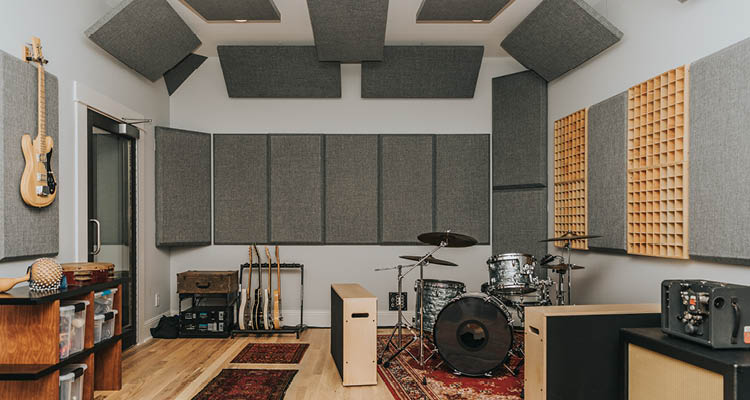
If you’re doing a record at home kind of Indie style, and as an example, my studio is in a house, so I do that kind of stuff. You’re able to capture very unique spaces. Spaces that nobody else really has. You can optimize the amplification and microphone capture and all that kind of stuff, and create these unique spaces.
So, with plugins, we’re able to give ourselves back some of the character that we are losing by using these incredible tools in the digital domain that kind of move us away from the actual spaces that we would have traditionally recorded in. The use of both plugins and reamping really gives us the ability to have the best of both worlds.
Radial: What about the use of amp sims in lieu of reamping?
Jacquire: I think it really depends. I mean, there’s a lot of really good sims out there. In some ways, I view sims as a different amp. It’s like using a different guitar.
Let’s talk about guitar-based music for a second. A lot of times you layer guitars. So you’ll have one pass that’s going into a sim maybe for convenience sake. It’s a great sound and it really works really well.
Then what if you take that direct signal you recorded and you give it a partner that’s a little bit more analog real world by reamping? They pair well together as opposed to just stacking up the same sim texture.
I think sims are all incredibly useful. I mean, it started more about reamping guitars and those sorts of things, and then for me, it’s moved into all these other areas. I probably use reamping a little bit more on instruments other than guitars, just because of all of the advancements that have been made with amp sims.
FIGURE 5
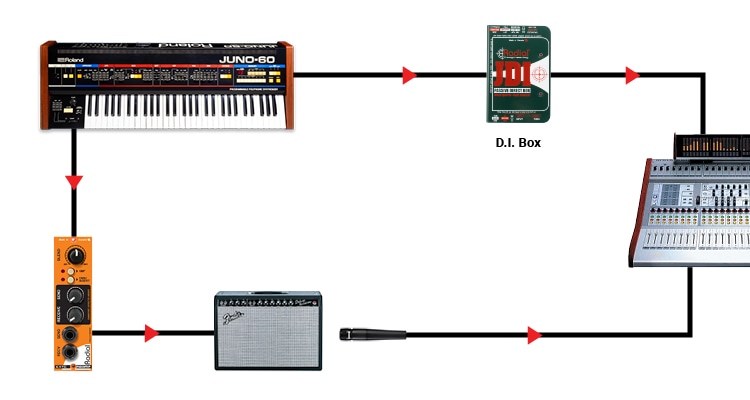
Radial: You’re talking about using it with the drum set or to get the capture that kind of tone from the kick and things like that so maybe less traditional and to capture the feel of the space that you’re in, things like that?
Jacquire: Exactly. For example, I’ll take my old Juno synth and instead of just plugging it straight in direct, put it through a Reamp® and run it through an amp and mic that. Because there I’m creating a texture that’s kind of a little bit unique. It still sounds and feels like a Juno, but it now it has an extra dimension because I haven’t just done the normal simple thing of simply taking it direct (see fig. 5).
Maybe I’m still taking the direct signal and the Reamp® signal is that secondary texture that I was talking about earlier that kind of gives it some dimension and character that you wouldn’t normally have with just recording it direct and then maybe throwing a plugin reverb or space on it. If I re-amp it into a space and mic it, well then that becomes a unique sound.
Radial: What are your kind of go-to boxes for reamping?
Jacquire: I’ve had a JD7 for, I don’t know how long, since they were new, so however long that’s been. I’ve used that a lot. I also use the 500 series EXTCs. I have a pair of those. I use those quite a bit. They’re in the control room, but then I also have EXTC Stereo.
If I’m not using the 500 series modules, the EXTC-Stereo is the one that I go to. I also have some SGI’s. I’ve used those for a very long time as well. Those do get used in the process of creating sound combinations. So, it’s the JD7, the SGIs, the EXTC Stereo and the 500 series. Each of those boxes gets used a ton.

